Dublin 1.34am
August of 629 CE, the Prophet Muhammad PBUH (Peace Be Upon Him)’s companion Umar burst into Medina’s grand mosque with a look of righteous anger on his face at the scene unfolding before him. A group of Abyssinians were performing in the main sanctuary, beating drums to create rhythms as they danced with lances to recount the story of Muhammad’s persecuted followers fleeing Mecca for refuge in the Abyssinian empire. The second half of their performance reenacted the newest development in that long-standing alliance: the sealing of a trade agreement between Medina and Abyssinia. In the evening twilight, the musicians were illuminated by distinctive African lanterns they had transported as gifts and hung throughout the mosque.
Outraged at what he perceived as a profane performance desecrating a sacred space, Umar was shocked to see Muhammad himself standing at the front of the mosque enjoying the spectacle in the company of his wife Aisha, who rested her chin on his shoulder with their cheeks touching, as he smiled approvingly at the performers. Umar could not passively stand by and stormed across the hall to confront Muhammad. Their conversation was observed but not completely overheard, with eyewitnesses noting that Muhammad gently motioned with his hand to calm Umar and spoke softly into his ear. The anger soon dissipated from Umar’s face, the reports go, as the performance continued uninterrupted.
The way the story is told in the narrative via Imam Ahmad, Aisha recalls overhearing some of Muhammad’s calming words: “Don’t interrupt them, Umar. I want this to serve as an important lesson to the zealous among the Jews that the path to God is one founded upon ‘fus-hah,’” which means “non-intrusion,” connoting kindness and an easygoing “live and let live” attitude. The hadith continues, “Indeed, I have been sent with ‘al-hanifiyya al-samha.’” The latter term was familiar to Muhammad’s companions, conveying the idea of fostering beneficial skepticism with an honest evaluation of inherited traditions, grounded in the nourishing pursuit of happiness.
Umar’s initial reaction had been motivated by an earnest desire to avoid decadence and sacrilege, yet it nearly derailed a picturesque celebration of peace and cooperation. The future caliph’s ability to reground himself and turn his fury into enjoyment of the Abyssinian performance attested to his sincerity. Bursting into the mosque in protest had been motivated not by a wounded ego but by a genuine concern for the state of his community. The entirety of whatever the Prophet Muhammad said to him remains unknown, yet it seems to have encouraged Umar to reexamine his initial assumptions and recognize nuances he had initially overlooked in his impulsive reaction.
The next day, the prophet shared a newly revealed Quranic passage that would become known as the famous “Ayat al-Nur” (“The Verse of Evening Light”), with words inscribed on mosque lanterns for over a millennium.
In recognition of the Abyssinians, the verse included two terms in Ethiopic (“mishkah” for the African lanterns and “zujajah” for crystal glass) and mentioned the olive tree, a species native to the Abyssinian highlands:
The Loving Divine is the source of illumination for the cosmos and earth:
His illumination is like a lantern,
inside it is a lamp,
suspended inside a crystal ball,
resembling a brilliantly pulsating star,
fueled by a special blessed tree — an olive tree,
neither from the east nor the west,
its oil so luminous it almost emits light without burning.
The verse’s vivid imagery required audiences to unravel the layered sources of uniquely refined light — a metaphor for profound knowledge and nuanced understanding. It served as a caution to zealous students like Umar struggling to apply abstract theoretical concepts to lived reality — to the point that they might even presumptuously seek to correct their own prophetic teacher. Because first impressions and superficial appearances seldom capture true essences, the verse suggested, students should constantly challenge themselves to peel back layers of learning in a perpetual quest for deeper and lasting fulfillment.
As God embeds knowledge everywhere, even a commonplace celebratory folk dance by musicians could be the bearer of transcendent truths. The story conveyed by the visiting Abyssinians aimed to inspire, as it channeled deep human emotions and experiences via expressive art to educate and uplift its audience. Ayat al-Nur suggested that tapping into such layered artistic inspiration required humans to remain unpretentious and open-minded.
Yet, 14 centuries after this incident, some Muslims still struggle with music and musical performance, worrying that its main inspiration is mischievous vice rather than artistic virtue. An abundance of recent books, satellite TV segments and online opinions promote the notion that Islam forbids music, viewing it as a satanic force that tempts human beings to wickedness. Several prominent converts to Islam — most notably Cat Stevens (aka Yusuf Islam) — have struggled to reconcile two seemingly conflicting aspects of their identity, sometimes forsaking their former artistic calling for a new pious belonging.
The ongoing tension in the public consciousness between Islam and music recently reemerged with the death of Sinead O’Connor, an Irish superstar pop singer who, in recent years, had converted to Islam as part of a complicated identity quest to resolve lifelong trauma. A Convert to Islam, Sinead O’Connor continue the battles she chose via her voice, singing.
As a warrior against injustice, the late singer found peace in music and Islam. Sinead advocated for abortion rights in Ireland in the 90s. In recent years she supported efforts to welcome refugees against xenophobes. She advocated for mental health issues. We didn't deserve her. One of those people who stood by her convictions.
To God we belong and to God we return (Islamic Quran, Al Baqarah 2, Verse 156)
As the tributes to O’Connor flowed in, the question of music as a permissible artistic force in Muslim communities resurfaced. The discussion has been further inflamed by a recent Taliban attack on musicians in Afghanistan. Given the widespread dissemination of teachings condemning music, a reexamination of traditional Islamic scholarship’s approach to music is long overdue.
For the first few centuries of Islamic civilization, music was not only a mainstream art form, but one elevated to international heights by Muslim musicians. The legendary polymath Ziryab fused Quranic teachings to pioneer musical motifs and instruments, including the forerunners of the modern guitar and piano, and even pioneered musical therapy.
The development of the symphony orchestra was influenced, in part, by the Ottoman military bands that had besieged Vienna in 1683 — which were themselves fashioned after religious processions by mystical orders, such as those founded by Rumi, who opened his famous poem “Mathnawi” with: “Listen with an attentive heart to the reed flute as it recounts a story of melancholy separation.” Classical Muslim musicians — many of them inspired by traditional orthodox teachings and concepts — have indelibly shaped global music.
So where did the ideological clash between Islam and music arise? Its origins lie in the declining centuries of the Islamic Golden Age, as the extravagantly wealthy Abbasid Empire began to decay. Puritans worried that the glory of Islamic civilization was at risk. Rather than spark a fresh intellectual renaissance, these advocates identified a scapegoat: music. This subset of the Hanbalites (the strictest of the four Sunni schools of jurisprudence) noted that debauched scenes of elite partying, drinking and dancing were almost always accompanied by music — with some performances sung by women.
To protect female “honor” and prevent temptation to drunken indecency — a noble original intent — they began to agitate for music to be prohibited. The concerns about the empire’s growing signs of decay were genuine (and this decay would ultimately lead to the Mongol sack of Baghdad in 1258). Yet the solution they devised was inauthentic, as Islam had no established objections to music.
These zealous agitators faced a problem, as neither the Quran nor the Hadith contain any authentic or clear injunction against music. The Quran explicitly forbids only a small number of extreme injustices, including bearing false testimony, murder, incest, rape, infanticide, idolatry and so on. Even with something clearly understood as taboo, such as intoxicants, the Quran’s language is in places more advisory than explicitly prohibitive. Early verses urge the avoidance of alcohol because its harmful results outweigh its benefits. Music goes essentially unaddressed by the Quran. In the Hadith, there is a positive description of how King David played the musical instrument known as the “mizmar” while composing psalms in praise of God. In this example, musical instruments serve as a conduit to elevated spiritual fulfillment.
Islamic tradition drew the line — just like Judaism and Orthodox Christianity — through the prohibition of musical instruments accompanying Quranic recitation and in the prayer service. The “salat” (devotional prayer) itself should rely only on the human voice, not because music was immoral but because the human voice was the most sincere and authentic manifestation of one’s dedication to the divine. Outside of formal prayers, Muslims regularly employed musical instruments for songs praising God and celebrating virtue. The most prominent is the joyful welcome of Muhammad into Medina marking the Hijra, which included a song accompanied by a women’s ensemble of hand drums. In addition, the very recitations of the Quran rely on musical meters (called “maqamat”), each described in musical styles (“nahawand,” “rast,” “bayati,” “saba,” “sikah” and so on) that were adapted by Quranic scholars to beautify Quranic recitation and the call to prayer.
Lacking any clear textual or historical evidence to support their ban, anti-music crusaders performed textual acrobatics to reinterpret a few Quranic passages, taking them out of context and recasting them as discussing music. In addition, they attributed sayings to Muhammad that he never uttered — and that all major Hadith scholars of the time and since have refuted as fabrications. For nearly 800 years, these concocted sayings and ideas were largely dismissed as outlandish.
One example of an invented hadith, refuted by Imam al-Thahabi in his work “Mizan al-Itidal,” had the prophet lamenting that, in the future, some of his followers would deem alcohol consumption, musical instruments and men wearing silk permissible. The scholar recognized its inauthenticity based on two principal factors: firstly, that it was transmitted by an unreliable narrator (Hisham Ibn Ammar), and secondly, that the hadith uses vocabulary from Abbasid-era Baghdad. In fact, these accounts narrated unmistakable critiques of the contemporary debauched party scenes occurring in Baghdad, reflecting the social crusade of these concerned critics.
Other justifications for the ban draw on more reliable hadiths, albeit selectively interpreted to arrive at the same conclusion. For example, numerous hadiths describe Muhammmad joining camel caravans coordinated by a flute-playing guide, whose tunes caused the camels to sway in unison. These zealous puritans misinterpreted this credible vignette to advance their social agenda. Muhammad had merely expressed concern that the intense song had caused the camels to undulate so much that women might be thrown from the litters atop the camels. In the puritans’ portrayal of the incident, Muhammad instead objects to the flute itself. They even went a step further by recasting the hadith as expressing concern that music causes women to become easily aroused and as such fall prey to men’s advances.
Yet in the numerous accounts we have of it, the entire narrative commenced with the prophet enjoying a beautiful flute tune and merely requesting that the melody be calmed slightly to help ensure the women’s safety. Historically, caravans have relied on musical accompaniment to hypnotize the camels and prevent them from going wild. Thus, calls to stop playing music could have resulted in disaster. The necessity of calming the camels through music countered the fringe medieval attempts to prohibit it. Hence, these invented hadiths were never taken seriously — until the 20th century.
In more recent times, propaganda efforts against music have been bolstered by thousands of newly trained missionaries from fundamentalist strands of Islam, who began a global crusade to propagate an interpretation of Islam which prohibited almost all music and sought to eradicate musical instruments from Muslim communities. The first Taliban state in the 1990s formally outlawed music and directly prosecuted people for simply listening to it. Mobs were incited to attack music stores and performance halls. Satellite TV stations in the 1990s further spread the message.
When the crusade against music by fringe Hanbalite followers first emerged centuries ago, numerous leading Islamic scholars of the era composed treatises to prove the permissibility of music. In fact, many leading Islamic scholars were themselves musicians. Take, for example, the way al-Thahabi describes al-Nadim in his biographical magnum opus: “an Imam and great scholar, who mastered many sciences; known for his proficiency in music.” Moreover, as Mufti Gad al-Haq noted in his 1980 fatwa on the permissibility of music in Islam: “It has been reported from the prophet and many of his followers, their students, and the great founders of the schools of jurisprudence that they all listened to and attended musical events which were not accompanied by vices or prohibited acts. This is the opinion held by most scholars of Islamic jurisprudence.”
Fast forward to 2023, when even Saudi Arabia now hosts music festivals. Decades of intense crusading against “the evils of music” have seemingly been overturned in an instant. Yet despite the opening of Saudi society, doubts remain in many Muslim communities, especially those in the West. Internet searches for “music and Islam” are dominated by articles insisting that music is “haram” (forbidden), presenting the usual theological contortions to justify the prohibition. With this narrative mainstreamed, some Muslims who listen to music do so with guilty feelings, as if indulging in a vice.
These individuals should be reassured that their love of music is, from the standpoint of traditional mainstream Islamic scholarship, hardly a source of shame. Of course, there exists harmful music that promotes violence, obscenity and transgression, yet to generalize that all music is wicked runs counter to numerous examples from Muhammad’s own life. Embedded in Islam are numerous encouragements to seek artistic splendor to beautify the world and inspire humanity to blossom (an activity called “ihsan”).
The puritan tendency toward banning music is the opposite of such a call. H.L. Mencken defined puritanism as “the haunting fear that someone, somewhere, may be happy.” The fatal flaw of any puritan movement is the false conviction that the only way to true spiritual fulfillment is via misery — that happiness drives one farther from the divine. It is a mindset established upon an aversion to happiness. Indeed, when the Taliban burned down a music store in June, the BBC quoted one official declaring, “These people were having fun.”
For too long, some Muslims have been restricted by a dynamic of constraint, shame, intimidation and even violence — and a negative narrative focused on forbidding rather than unleashing potential. The Prophet Muhammad once encountered three men in the mosque, each trying to top the other with bold pledges of piety. “I will remain celibate,” declared the first. “I will fast every day,” vowed the second. “I will spend all nights in prayer,” swore the third. The prophet stood at the pulpit and admonished them. “I am married, I don’t fast every day and I don’t spend all my nights in prayer. I choose an approach of balance. This is my example (‘sunnah’)!”
During the scene with the Abyssinian musicians at the mosque in Medina, Muhammad deftly diffused a volatile situation. A gentle hand motion and soothing words sufficed to calm Umar’s pain and rage. The current challenge before us is to determine the right gestures and the thoughtful words that might help calm those on a misplaced crusade against music that only hurts themselves and others. Our hope, following the wise and gentle example of Muhammad, is that their passion and talent can be rechanneled from repression toward blossoming — for the benefit of the world and themselves.
========END————
Thank you, as always, for reading. If you have anything like a spark file, or master thought list (spark file sounds so much cooler), let me know how you use it in the comments below. Thank you so much for letting me vent! If you enjoyed this article, you can give pledge to me same as 25 subscribers (click PLEDGE button) or simply share this article with a friend. It helps me more than you realise.
If you enjoyed this post, please share it.
______________
Professor Hendrik, Professor Eric, and another person, Prof David A. Andelman, former Bureau Chief NYTimes recommended my substack, also some Chief Technology of Financial Times (FT) recommended my substack, not only subscribe. I'd be happy to get more & more PLEDGE and recommendations for better crafted writing (via Bank Central Asia (with my full-name ADI MULIA PRADANA, clearing code 0140119, account number 0201558866 or via STRIPE. For me, prefer Bank Central Asia).
If a friend sent this to you, you could subscribe here 👇. All content is free, and paid subscriptions are voluntary.
——————————————————————————————————
-prada- Adi Mulia Pradana is a Helper. Former adviser (President Indonesia) Jokowi for mapping 2-times election. I used to get paid to catch all these blunders—now I do it for free. Trying to work out what's going on, what happens next. Now figure out and or prevent catastrophic of everything.
(Very rare compliment and initiative pledge, and hopefully more readers more pledges to me. Thank you. My note-live blog about Russia - Ukraine already click-read 6 millions, not counting another note especially Live Update Substack (mostly Live Update Election or massive incident)
=======
Thanks for reading Prada’s Newsletter. I was lured, inspired by someone writer, his post in LinkedIn months ago, “Currently after a routine daily writing newsletter in the last 10 years, my subscriber reaches 100,000. Maybe one of my subscribers is your boss.” After I get followed / subscribed by (literally) prominent AI and prominent Chief Product and Technology of mammoth global media (both: Sir, thank you so much), I try crafting more / better writing.
To get the ones who really appreciate your writing, and now prominent people appreciate my writing, priceless feeling. Prada ungated/no paywall every notes-but thank you for anyone open initiative pledge to me.
(Promoting to more engage in Substack) Seamless to listen to your favorite podcasts on Substack. You can buy a better headset to listen to a podcast here (GST DE352306207).
Listeners on Apple Podcasts, Spotify, Overcast, or Pocket Casts simultaneously. podcasting can transform more of a conversation. Invite listeners to weigh in on episodes directly with you and with each other through discussion threads. At Substack, the process is to build with writers. Podcasts are an amazing feature of the Substack. I wish it had a feature to read the words we have written down without us having to do the speaking. Thanks for reading Prada’s Newsletter.
Wants comfy jogging pants / jogginghose amid scorching summer or (one day) harsh winter like black jogginghose or khaki/beige jogginghose like this? click
Headset and Mic can buy in here, but not including this cat, laptop, and couch / sofa.





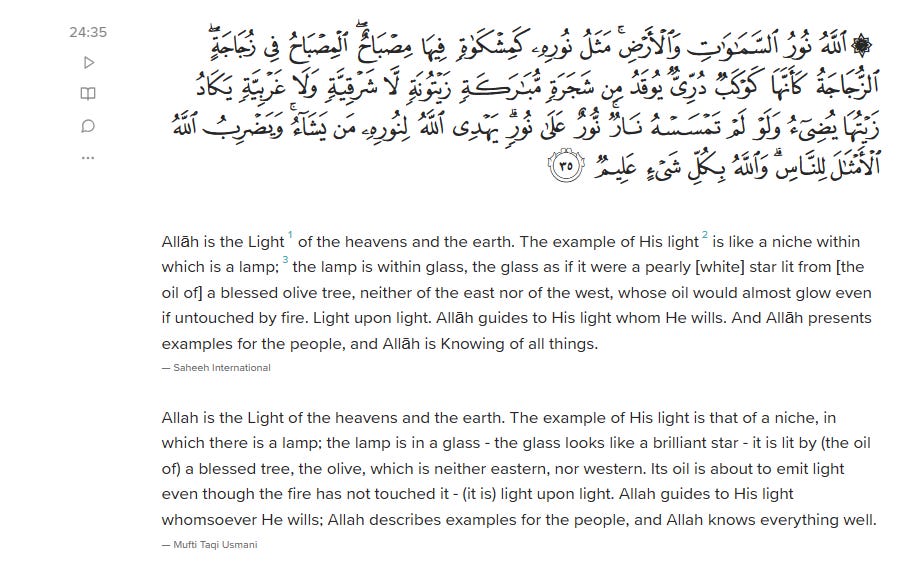

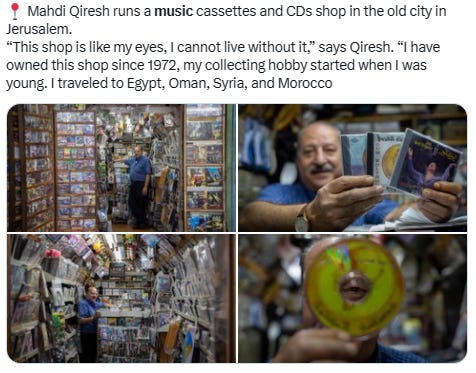


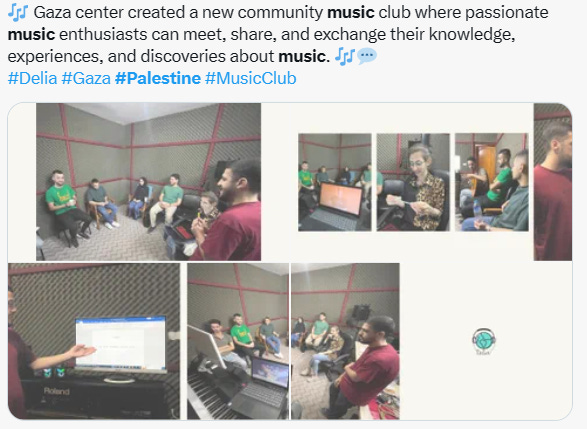





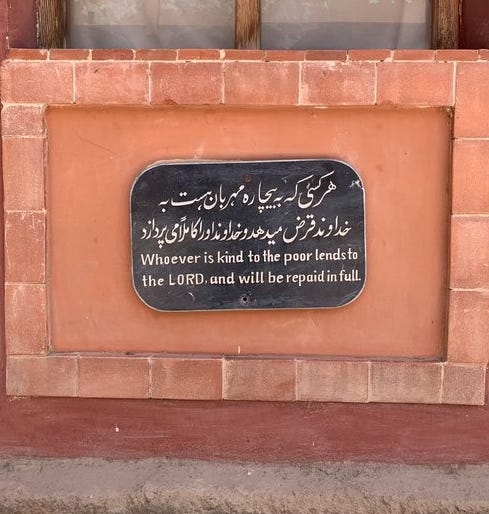

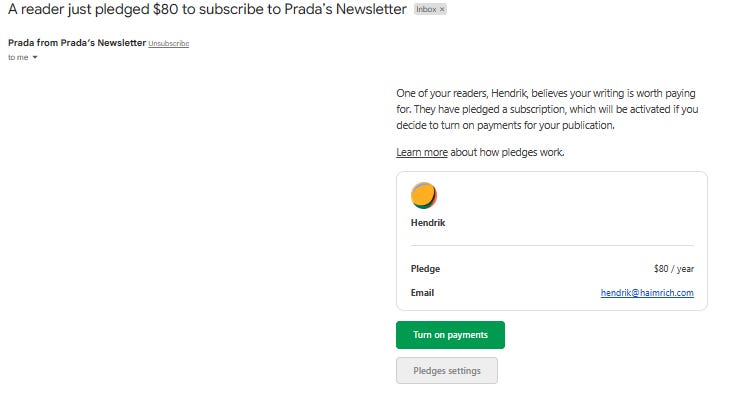




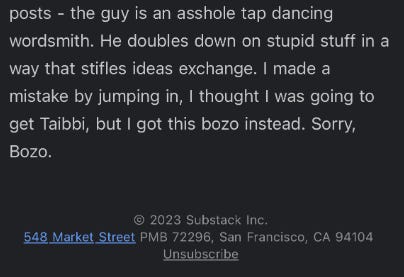





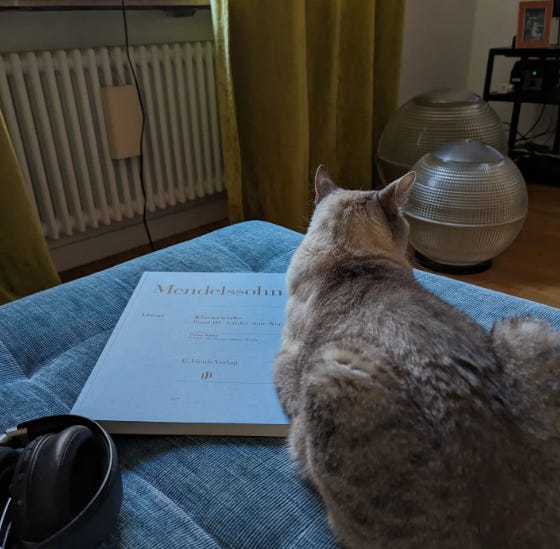

Music is such an integral part of my life, that any group that banned music, or said that I couldn't listen to music, is a group I'd walk away from.